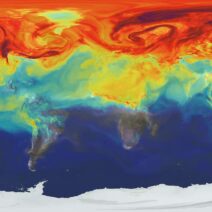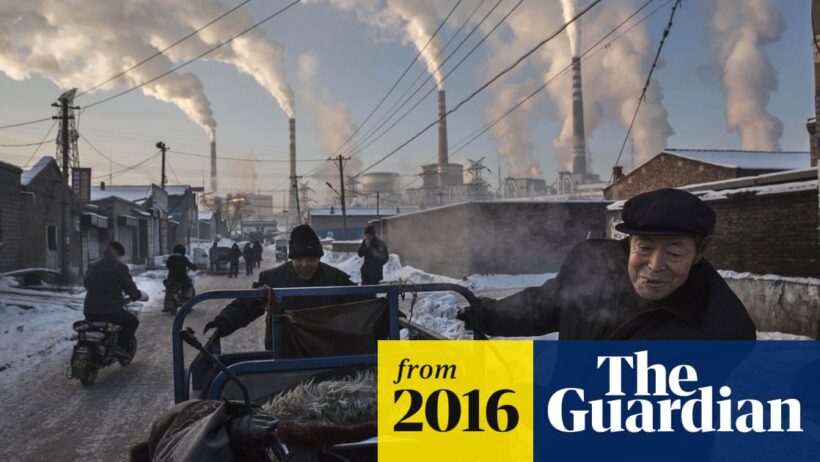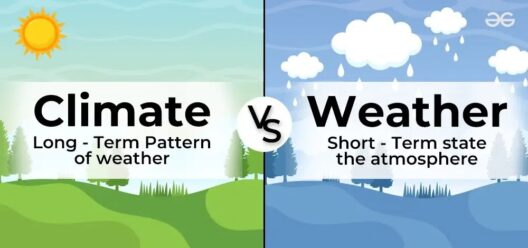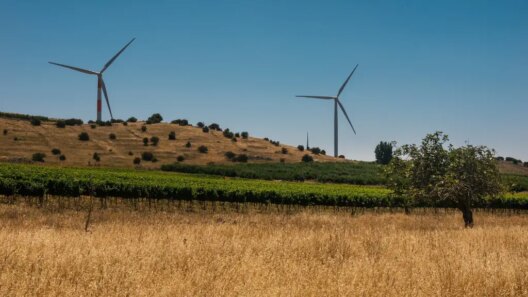As we teeter on the precipice of ecological calamity, a resounding question echoes through the corridors of discourse: Is global warming the paramount menace to our future? In exploring this inquiry, we must survey the multifaceted dimensions of climate change, as well as the intricate web of factors that render it an existential threat to life as we know it.
To begin, it is crucial to delineate what constitutes global warming. Essentially, it refers to the long-term increase in Earth’s average surface temperature due to human-induced emissions of greenhouse gases such as carbon dioxide and methane. This phenomenon has foundational origins in the Industrial Revolution, when the coal, oil, and gas industries burgeoned, releasing copious amounts of carbon into our atmosphere. The ramifications have been catastrophic and pervasive, instigating a chain reaction of climatic alterations, which we now grapple with today.
At its core, the fascination with global warming stems from its complexity and the depth of its implications. It is not merely an environmental issue; it interlaces with social, economic, and political paradigms. The observable alterations in weather patterns raise perturbative questions about food security, water availability, and geopolitical stability. The shrinking polarized ice caps and extreme weather occurrences point to an alarming reality: climate change is reshaping the world in real time.
The empirical evidence corroborating global warming is irrefutable. The Intergovernmental Panel on Climate Change (IPCC) reported unequivocally that human activities are responsible for roughly 1.1 degrees Celsius of warming since the industrial era. Observations reveal intensified heatwaves, erratic rainfall, and soaring sea levels that threaten coastal communities. Such phenomena signify more than mere statistical deviations; they represent a transformative shift in the biospheric equilibrium.
Yet the narrative unfolds in layers, posing an exploration of deeper implications. While global warming is a paramount environmental challenge, it is imperative to recognize its potential to exacerbate existing global inequities. Developing nations, which are often the least equipped to adapt to climatic changes, are experiencing disproportionately severe impacts. Droughts, floods, and hurricanes devastate economies reliant on agriculture and tourism, exacerbating poverty and leading to mass migrations and civil unrest.
Moreover, the psychological ramifications of climate change cannot be undervalued. The phenomenon generates a climate of anxiety that permeates societies, often referred to as eco-anxiety. The spectre of impending doom leaves many feeling helpless and overwhelmed, as the collective procrastination in addressing climate change fosters a sense of despair. Young people, in particular, often grapple with the weight of an uncertain future, feeling the pressure to advocate for change amidst a backdrop of inertia from those in power.
In examining the environmental costs of ignoring global warming, one must confront the imminent threat of biodiversity loss. Warming temperatures and habitat destruction result in a rapid decline in species populations. The consequences of such extinctions stretch far beyond the enchanting beauty of biodiversity; they disrupt ecosystems’ functionality and resilience. As keystone species vanish, the consequences can cascade, threatening the balance that sustains human life.
Despite the gravity of this threat, the debate surrounding global warming has been encumbered by misinformation and political ideologies. The contention manifests in varying degrees, yet what remains undeniable is the scientific consensus asserting that proactive measures can mitigate consequential outcomes. Investment in renewable energy, sustainable agriculture, and conservation efforts could pave the way toward a sustainable future. Transitioning from fossil-fuels to solar, wind, and hydroelectric power could reduce emissions and foster green job creation, revitalizing economies in myriad ways.
Transitioning to a sustainable economy, however, requires robust coalitions among governments, industries, and civil society. Policymakers must cultivate a harmonious approach that integrates environmental safeguard mechanisms with economic development strategies. Creating regulatory frameworks that prioritize sustainability can catalyze innovative solutions and empower communities to combat climate change effectively.
Education plays a pivotal role in this arena. Comprehensive environmental education can engender a profound understanding of climate issues and their implications. By fostering a culture of sustainability and environmental stewardship, individuals can be equipped to take action. Grassroots movements have emerged globally, mobilized by the urgency of the climate crisis. These movements serve as a testament to the collective desire for change and the power of informed activism.
While global warming indeed represents one of the gravest challenges to our existence, it is not the sole threat looming in the shadows. Other pressing issues, such as resource depletion, deforestation, and pollution, coexist and intertwine with the climate crisis, necessitating a holistic approach to global stewardship. These interconnections underscore the necessity for synergistic solutions that recognize the interdependence of ecological, social, and economic systems.
In conclusion, the reality of global warming as a formidable threat to our future is indisputable. The myriad consequences underscore the urgency for concerted action; however, it is equally crucial to recognize the intricate interplay of factors that contribute to this existential challenge. Expanding our understanding of climate change and fostering cohesive efforts across multiple spheres will be paramount in navigating the complexities ahead. The onus to enact transformative change rests upon individuals, communities, and policymakers alike, for only through collective resolve can we chart a sustainable course toward a resilient future.








